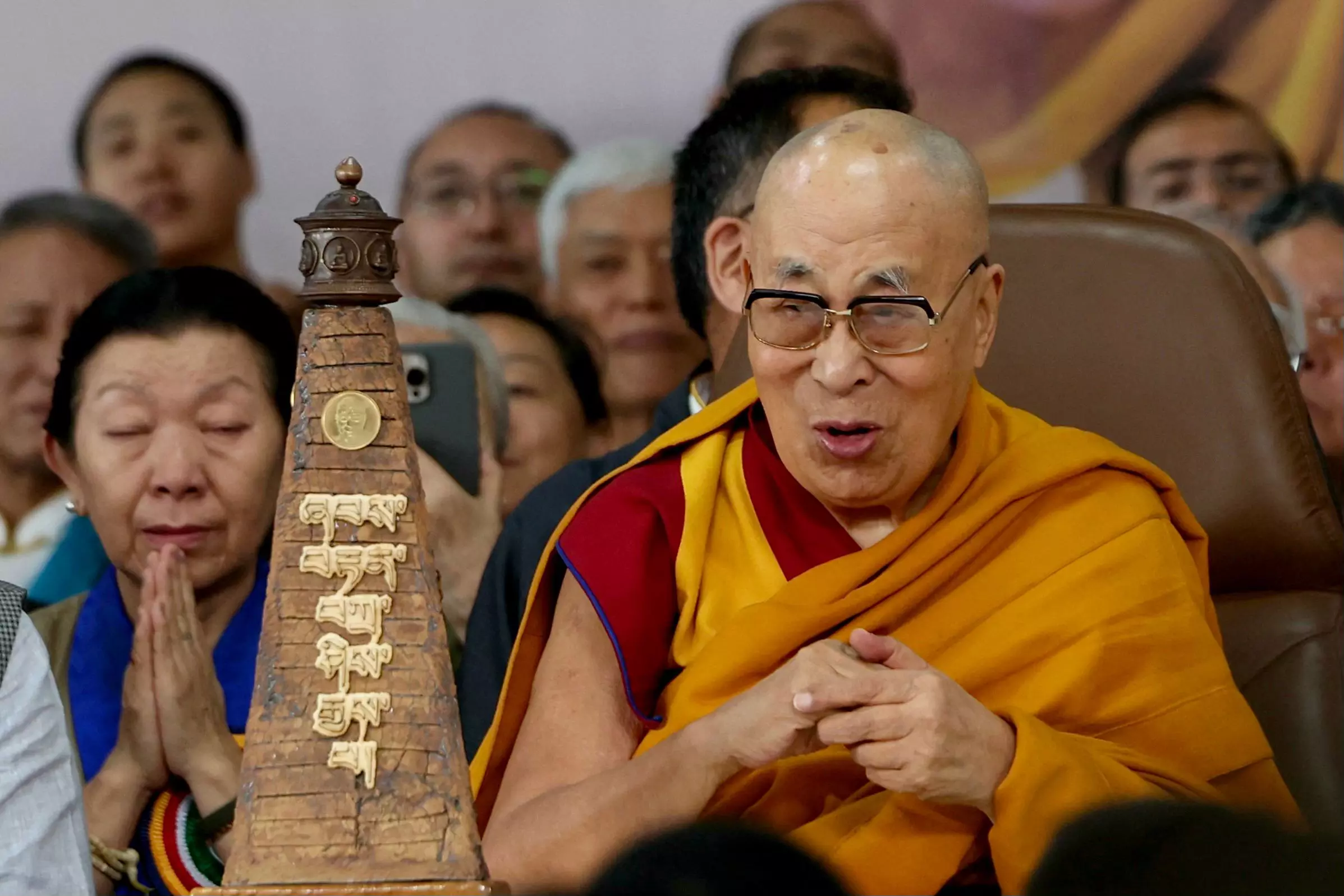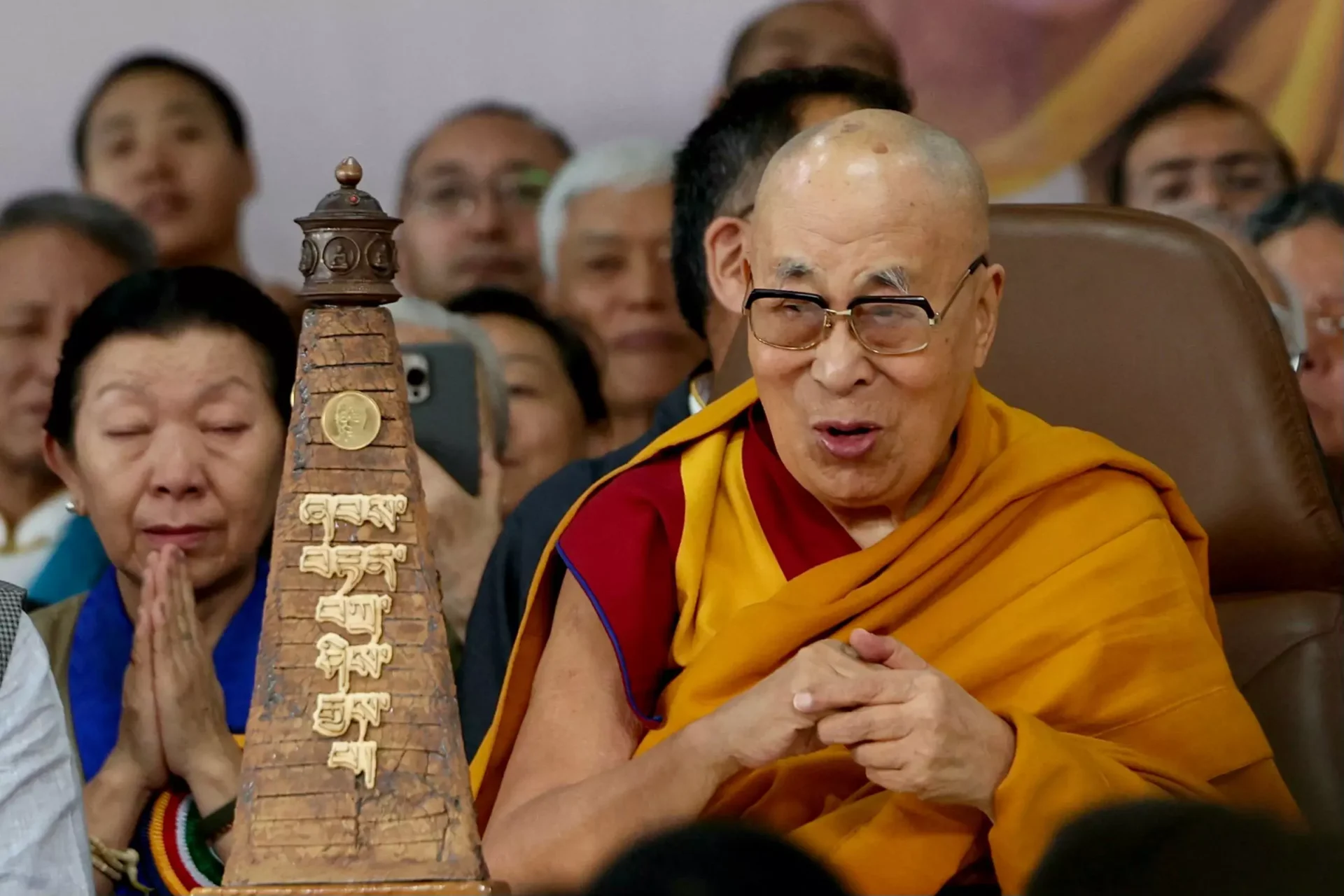
His Holiness the Dalai Lama, the supreme spiritual leader of the Tibetan community, marked his 90th birthday on Sunday, July 6.
Tibetans, non-Tibetans, and other followers of the Dalai Lama across the world have been worried about his succession when he dies or is reincarnated. There are concerns that the long-standing tradition and institution might end with his death, along with his leadership and spiritual guidance. But they need not worry.
During the celebrations that started some time ago, at the beginning of the birthday week, the Dalai Lama announced that his non-profit charitable foundation, the Gaden Phodrang Trust, which was set up to preserve and support the 600-year-old tradition and institution of the Dalai Lama, will have exclusive authority to recognise his future reincarnation in consultation with the leaders of Tibetan Buddhist traditions.
The Dalai Lama stated: “I am affirming that the institution of the Dalai Lama will continue.”
This reassured Tibetans and the Dalai Lama’s global supporters, who see him as a symbol of non-violence, compassion, and his approach of the “Middle Way” to peacefully resolving the Tibetan issue and promoting stability and coexistence between the Tibetan and Chinese peoples. The Tibetan Buddhist concepts of interdependence and non-violence have shaped the Middle Way, respecting the fundamental rights of Tibetans, promoting peace and security in China, and offering hope and inspiration to conflict-affected areas worldwide.
The announcement also ended years of speculation that began when the Dalai Lama once suggested he might be the last to hold the role. The Tibetologist Glenn H. Mullin wrote that in the mid-1970s, the Dalai Lama told a Polish newspaper that he thought he would be the last Dalai Lama. In a later interview published in the English-language press, he stated: “The Dalai Lama’s office was an institution created to benefit others. It may soon have outlived its usefulness.”
These statements caused a furore amongst Tibetans in India. Many could not believe that such an option could even be considered and that the decision to reincarnate was not the Dalai Lama’s. Instead, they felt that since the Dalai Lama is a national institution, it was up to the people of Tibet to decide whether the Dalai Lama should reincarnate.
There is a dichotomy in the Dalai Lama’s role as both a spiritual leader of the Tibetan people and a political leader of the Tibetans living under Chinese rule in Tibet. As the spiritual head of Tibetans, he has promoted non-violence in his dealings with China and its presence in Tibet.
More radical Tibetans have been disappointed by this aspect of his leadership. The “Free Tibet” movement campaigns for an “end to China’s occupation of Tibet and international recognition of Tibetans’ right to freedom”. It sees him as too lenient with the Chinese government in pressuring them to grant more rights and autonomy to Tibetans in Tibet.
The Tibetan region had kept its independence until 1951, when it was annexed and integrated into the People’s Republic of China (PRC). Today, China governs western and central Tibet as the Xizang Autonomous Region, while the eastern parts are now mainly autonomous prefectures within the provinces of Qinghai, Gansu, Yunnan, and Sichuan.
India’s offer of sanctuary to the Dalai Lama and the 89,000 Tibetans who fled with him in 1959 created a complex relationship with China. Nevertheless, the presence of the Dalai Lama and his institution in Dharamsala has enriched India and its people.
The Dalai Lama is also a practical man. For example, he has said that his successor might be chosen in ways other than the traditional, and could be an adult, thereby saving years of being groomed for the role. He has addressed the concerns of women and nuns among his followers. Feminist Buddhist scholar Rita Gross, in her book, Buddhism After Patriarchy, writes: “The single biggest difference between the practice of Buddhism in Asia and the practice of Buddhism in the West is the complete participation of women in Western Buddhism”.
“I call myself a feminist”, said the Dalai Lama. “Isn’t that what you call someone who fights for women?”
The Dalai Lama received the Nobel Peace Prize in 1989. His wisdom, wit, compassion, and initiatives to unite leaders of different religious groups are remarkable. This was evident during his birthday celebrations when leaders from all major religions attended.
As the admirers and followers gathered for his 90th birthday celebrations in Dharamsala, the Dalai Lama moves around in a golf cart and then, supported by monks, walks slowly up to the platform where he was seated. He greeted those attending the ceremonies, waved, and touched the traditional white scarves presented to him. Once seated, people came up to shake his hand. He leans over, kisses their hands, and pats them on the face. Now and then, he scratches his forehead and then asks an attending monk to mop his forehead. The ceremonial rice and tea are served to everyone gathered. Then a four-layered birthday cake is wheeled in, cut, presented to him, and he eats a piece. The audience already has the exact cake on the tables where they are seated, as a cupcake. There are short speeches, translated into English, songs, and some dances. The audience watches the birthday man with awe, love, reverence, and belief.
The Dalai Lama has shown that love and compassion are vital for a fulfilling life. In these difficult times, his calm presence is a crucial remedy to worldwide leadership failures.

